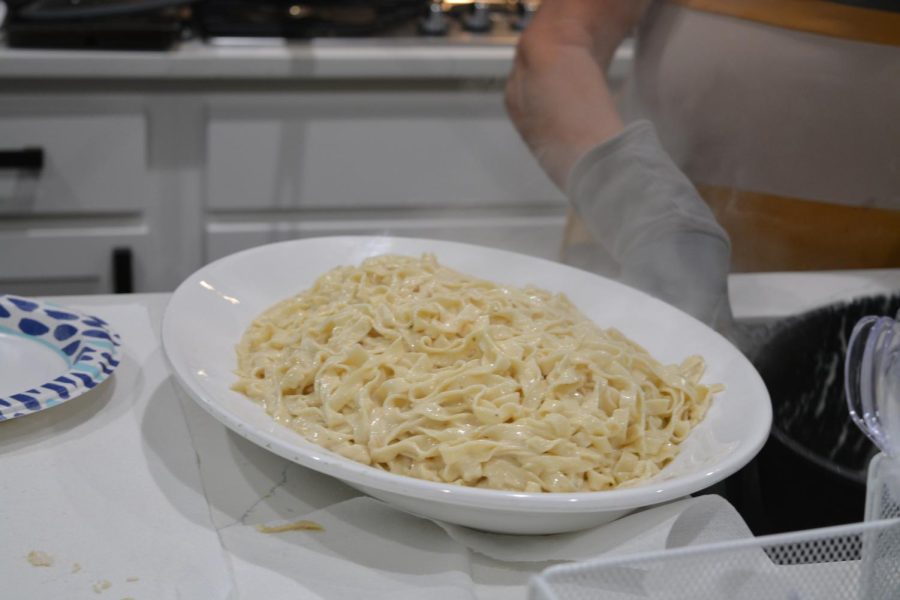The Campobasso family on the post-sensory aspects of food
September 8, 2022
The first thing one notices about the Campobasso household is its lack of pretense. The decor is soft and familiar, the black-and-white rescue dog Max is excitable, the oven, stove and dinner table are all in use. As one works in the kitchen, another tends to the grill outside. The family consists of Michelle and Saverio Campobasso and daughters Gabriella, Giada, and Giuliana.
There’s no show of humility in their passion for traditional Italian food; they’re proud of it. In fact, Michelle routinely updates her Twitter page with photos from their kitchen. Work sometimes stalls this sideline vocation, but now that Saverio’s mother is in town, who otherwise lives in Bitetto, Italy, the cuisine has embedded itself into everyday life.
“Eating and providing–it’s a big part of our culture,” Michelle said. “The kids love every second of [the cooking process] and learning recipes passed down from generation to generation. Nonna taught Saverio and he’s teaching the kids, being a part of that scenario that moves through generations.”
After settling down in the DFW area in the early 2000s, the family has remained in Prosper for more than a decade, building and cherishing close ties to the town. The couple owns and runs New Look Remodeling, started in 1999 and built up from almost nothing.

“I remember passing out flyers [advertising our business] back in the day, going to each individual neighborhood like Highland Park [in Dallas], bringing the babies along,” Michelle said. “Our business started flowering during the pandemic because we became more relevant and trustworthy in the area’s platform. People started calling us more and more.”
Even with a busy schedule, they nevertheless find time to stay in touch with their culture, resisting easy and pre-packaged Italian food options to favor more interaction with the recipes and their elementary ingredients. Bread is made and baked at home and pasta is prepared with a supply of Italian double zero flour.
“Calzones are my favorite dish, even though they’re simple,” Giada, a senior at Prosper High School, said. “Not the ones in restaurants, but the ones my dad makes. It never really tastes as good [outside]; homemade, I guess.”
Giada and her sisters haven’t yet gotten a chance to visit their parents’ hometowns, Sicily and Bari. They plan to get dual citizenship for the U.S. and Italy in the future. Meanwhile, they stay connected to the country and its culture in other ways: talking to relatives over calls, having family visit them, and, of course, engaging with Italian cuisine.
“The food makes me feel closer to [family in Italy] because it’s recipes that come from them,” Giada said. They follow recipes passed down from grandparents and relations, as opposed to from an outside source such as the internet. “It’s what they make, we get to connect with that.”
Although Michelle grew up in the U.S., Saverio migrated here for higher education and takes the role of main cook in the family. Even after living in the country for more than two decades, the couple continues a kitchen ethos that doesn’t compromise quality food for work schedules.
When asked his favorite dish, Saverio replied, “Cholesterol: when you get older, that’s what such food [amounts to].” Though merely an offhand remark, it makes clear that few environmental or situational hindrances detract from the more symbolic aspects their food serves—community and observance of origins.








